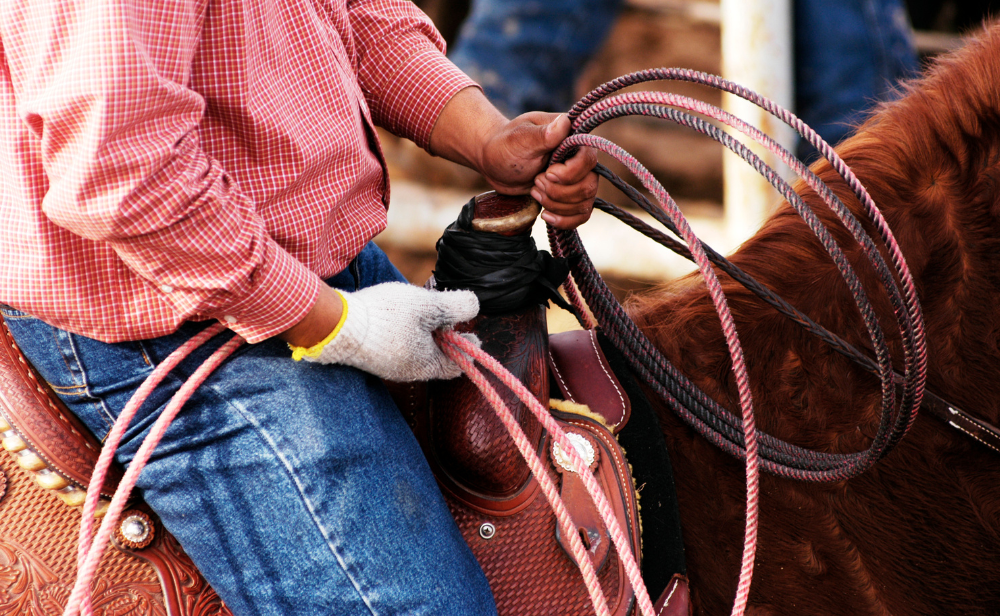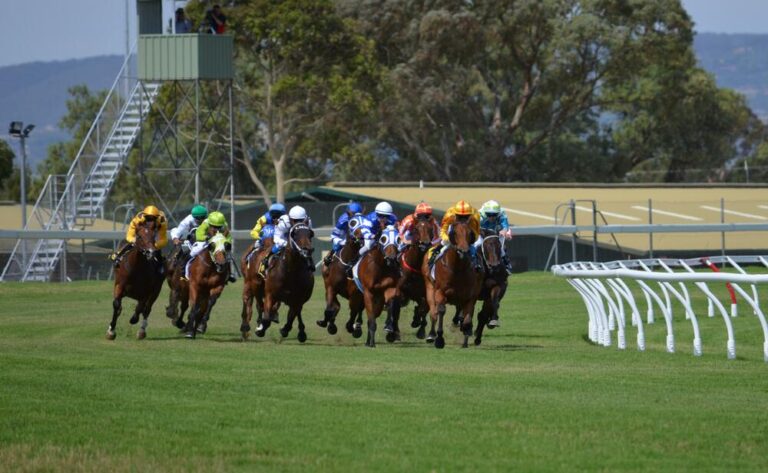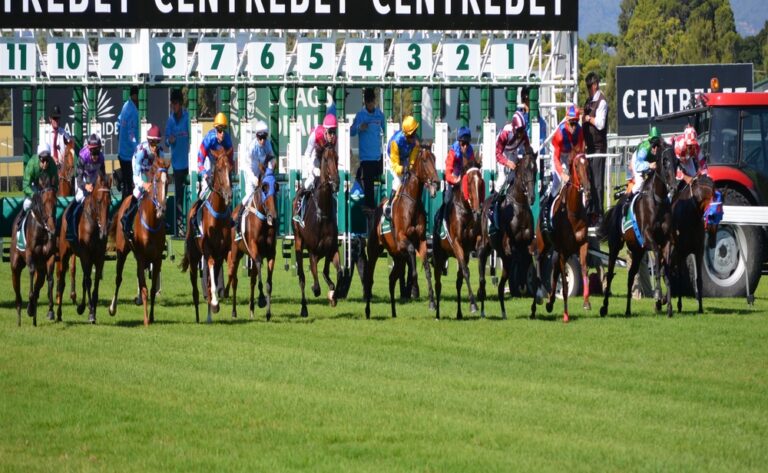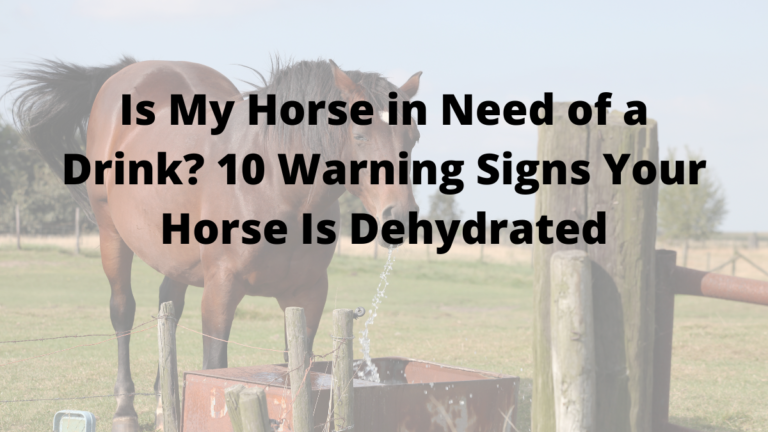How Regularly Do Racehorses Start competing? Annually, Monthly, and Forever


I noticed some of the horses had lengthy pauses between races while others competed rather frequently when I was looking at a racing form. This led me to ponder how often the typical horse races are and how this affects the animal’s performance. I conducted some studies to learn more.
Racehorses compete for seven times a year on average. Higher-class racehorses compete once a month or fewer, whereas lower-level racehorses compete every two weeks. How frequently a horse can race is also influenced by injuries and available races.
Owners invest in racehorses because they only generate income when they are racing. Owners want their horses every week, but there are limitations to how frequently a racehorse can run.
A healthy racehorse can participate in 18 races per year.
Fitness level is the most critical aspect in determining whether a horse can race again. The horse’s capacity to run is called its fitness level or condition. Timing a horse’s morning workouts and seeing how quickly it recovers allow us to estimate its degree of fitness.
The horse’s body suffers damage during a race. Therefore he will need some downtime to recuperate and fully restore his fitness level. He will need two to four weeks to get back into running fitness and be prepared for his next race, barring any injuries.
A healthy horse requires two to four weeks off in between races to rest and recover.
If the racehorse is regarded as of the highest calibre, he will probably be given a month off from competition to rest and get back in shape.
Horses are unique creatures; thus, their post-run recuperation times will vary. Some horses may require a long rest period of six weeks or longer before they are prepared to compete once more.
A horse can only compete in so many races before getting hurt.
The horse’s trainer and groom will examine it for injuries following a race. They frequently experience fever, joint swelling, or even bleeding from the nostrils.
They will need to treat and rest the horse if their inspection reveals that it has been hurt. Even if the injury is mild, the horse must take some time off from training and competition.
If racehorses aren’t given enough time to recover, the mild injury could worsen and become fatal. The breaking length will depend on the horse and the extent of the damage.
It can take up to six months for some injuries to heal.
A horse may require a six- to eight-month break before starting its race preparation. Click here to learn more about how relatively minor racehorse injuries can develop into life-threatening ones.
While owners are eager to get their racehorses back in the saddle and compete, they must heed the counsel of their veterinarian and trainer. An early racecourse push could cause a horse’s crippling.
Hurriedly returning racehorses frequently sustain permanent damage. Bowed tendons, strains and sprains, and knee chips are common ailments.
The horse can only participate in a race.
There must be races that your horse qualifies for to be able to race it. It frequently happens for a trainer to have his horse prepared to run but unable to locate a race to put him in.
Due to my inability to locate an appropriate race for my young horse, she hasn’t competed in a race in the past month. She is healthy and prepared to compete, but the track officials have not set up the appropriate race.
She performs effectively in races lasting six furlongs, for instance, despite being a maiden. She has to compete in a maiden claiming race that is six furlongs or less to have a chance of winning, but the only ones that are offered are a mile or longer.
I don’t want to run her over six miles or in an allowance race. In this circumstance, I have to wait till the stewards write a race for my horse. For horses in higher divisions, finding races is increasingly more complex.
This makes sense given that more horses are at lower levels, leading to more races being written for them. The top horses must wait for the appropriate race that suits them. Stakes races aren’t written about every day.
Track rules mandate a specific number of rest days.
A horse must rest for a specific number of days in between races according to track regulations. Most states require six days of recovery before allowing a horse to run again. Let’s examine the reasons a horse might rest between races.
When to race a horse is a decision the trainer makes, sometimes a subjective one.
A trainer wants his career to seem as excellent as it can, just like other professionals do. Owners of racehorses wish to send their mounts to the trainers who will offer them the best chance of winning.
They will review the performance histories of the horses trained by each trainer to aid in their judgment. Trainers are aware of this and need to maintain a positive record if they want to continue drawing in quality horses.
Before important races, trainers gave their horses a prep race as a “tune-up.” “Tune-up” races are now infrequently used since people are worried about having a greater winning rate. Instead of the “tune-up” race, the horse will receive additional training sessions from the trainers.
Horse owners want to run their animals as frequently as they can.
The goal of racehorse owners is financial gain. If their horse isn’t moving, they can’t make any money. Owning a racehorse is expensive, and the only way to potentially recover any of that money is if the horse competes in a race.
Horses that are older and thought to be less desirable will be raced more frequently than their more valuable counterparts. To recoup costs, owners are ready to run less expensive horses during the shortest delay between races.
Limited races frequently have strong breeding possibilities.
The fact that more and more horses are being retired from racing is another reason they don’t run as frequently. An owner may decide to stop racing their horse and begin breeding them when the animal has proven itself.
Demand for good broodmares is excellent, and stud costs have increased dramatically. The current stud price for War Front is $250,000.00 per cover. We probably won’t see him racing for a while.
The frequency of horse races is influenced by medicine.
The industry of racehorses has seen a rise in drug use throughout time. The Jockey Clubs’ figure shows that racehorses now run fewer races annually.
Some people think the new drugs have an immediate negative effect on a racehorse’s health. The theory goes that painkillers make a horse go through an injury because they block out the pain.
Veterinarian panellists gathered in 2014 to talk about issues in the racehorse industry. It was brought up for discussion. None of the panellists was willing to accept the widely held theory that the decline in starts per horse and smaller fields have been caused by increased therapeutic drug use, particularly the anti-bleeder furosemide. https://www.bloodhorse.com/horse-racing/articles/113244/no-consensus-on-fewer-starts-shorter-fields
Therapeutic drugs don’t harm horses, according to Scollay, who also said that a trainer or veterinarian might mistakenly believe a horse has a problem if they rely too much on therapeutic drugs.
“The purpose for which they are utilized may cause harm or injury to the horse.
When can racehorses compete?
I recently visited the racehorse training facility, where I noted that the majority of the horses appeared to be relatively young. I was curious about what age racehorses start their careers after observing all these colts and fillies.
At two years old, horses are broken to the saddle and start their racehorse training. Typically, the first races for two-year-olds begin in the late spring. A horse younger than two years old is not permitted per track regulations in a sanctioned competition.
According to the regulations governing horse racing, a horse must be two years old before it may compete. However, he could only be 18 months old in actual months. Allow me to explain; horses are all born on January 1 of the year they are born.
Although most breeders strive to deliver their foals as near to this date as is practicable, some will still be born as late as May. Horses are held throughout the year.
Horses could take up to six years to reach maturity.
Horses often take four or five years to reach full maturity. Some people might not be fully mature until age six. Racing is hard on a horse’s body; therefore, riding a horse that isn’t fully mature can result in serious, occasionally career-ending injuries.
These children will require more downtime in between races and individualized care. Many people disagree that two is too young to start racing horses, even though they can begin their careers at that age.
The bulk of racehorses waits until they are at least three years old before they begin competing. You might be interested in my in-depth post about racehorses’ early age.
When is a racehorse too old to compete?
We saw a horse we formerly owned win a race one day at the racetrack; she was ten years old. I pondered how much longer she has in her racing career after watching her run.
Some horses are too old to compete at four years old, while others are still doing successfully at ten or twelve. Only as old as they feel. Your horse will let you know when he has completed his racing career and is prepared to retire.
Like people, horses are individuals who age differently, have unique genetic composition, and were raised in various ways, as I mentioned previously.
In the Guinness World Records, I discovered the ancient racehorse-winning record. Al Jabal, a purebred Arab who raced on the flat and was 19 years old, won The Three Horseshoes Handicap Stakes (6 furlongs) on June 9, 2002, at Barbury Castle in Wiltshire, UK. He was ridden by Brian Boulton and was owned by Andrea Boulton (both from the UK). May 22, 2001, Oldest race winner with a horse | Guinness World Records
Behavin Jerry (foaled in February 1964) won a $1,500 claiming race on September 7, 1981, at the age of 17, setting the record for the oldest thoroughbred to win a race in the United States, according to the information I was able to find.
He had 307 starts in his racing career and won 38 of them. For 15 years in a row, he started more than 20 games on average. Because of worries that he would get a heart attack on the track, he was forced to retire. He expired at the age of 32 in 1996.
You might ask where the second horse was plodding or if these horses were still sprinting at this age. A chart comparing the lifespans of humans and horses are included in a different piece I published titled “How Long Does a Racehorse Live?”
According to the table, an adult human would be 53 years old if they were a horse, and an adult human would be close to 60 years old if they were a horse.
What is the Average Number of Races a Racehorse Runs in a Career?
I determined that they had an average of 28 stars throughout their lifetime by looking at the data from The Jockey Club. But once more, we need to go deeper into this. As is common knowledge, a horse will be used for breeding at a young age if he is successful early in his career.
For instance, a three-year-old Kentucky Derby winner might immediately enter retirement. Because their worth lies in standing at stud rather than racing, the best horses will have the shortest racing careers.
Geldings and claiming class horses will continue to run until it becomes unprofitable. If they have no injuries, they might compete in 20 races on average every year over a four- or five-year career.
When a racehorse wins, does it know it has done so?
Racehorses are built for speed, and I think they like to run. If you ever observe them on a chilly morning, you will discover that they don’t require any encouragement to kick up their heels and run about the meadow.
Do they enjoy racing, and do they know when they have won? This is the more critical query. On this, I’m not so sure. Some horses become ecstatic before a race because they can sense it. But are the horses interested in winning?
Do they understand that they just crossed the finish line? No matter how much I and others would prefer to believe otherwise. Horses naturally try to flee to survive.
Although young colts may chase one another, there is no racing involved. The horse is straining every muscle to run as hard as it can during the closing stages of a race.
The goal is to make the jockey happy, not to come in first. A horse is aware of the rider’s requests for ever-increasing speed. He is unaware he is running toward a specific location on the track.
In the brightness and awe of the winner’s circle, they may strut, but it is probably for the attention it garners. They could not even be aware that they participated in a race.
Are Quarter Horses more active in racing than Thoroughbreds?
While thoroughbred horses run more races overall, quarter horses can run more races in a shorter amount of time. The quarter horse racing season is typically more concise than the thoroughbred racing season at most grounds.
A shorter season results in fewer races being written, which makes it harder to locate races to enter a racing quarter horse in. Compared to thoroughbred racehorses, racing quarter horses often recover from a race more quickly.
Because the race distance is substantially shorter and the horse is not exerting themselves as vigorously for as long, the recuperation time is probably faster. Additionally, quarter horses are more compact and have thicker muscles, which makes them less prone to damage.
Formula One Racing Calendar
The triple crown schedule goes against what I said earlier about giving good young horses time off. Competitors for the triple crown are only given a short recovery period in between each event.
Specific horseback riders have proposed month-long breaks between races, but the racing public has not considered the idea. To participate and prevail in this series, the three-year-old runners must be tough. This timetable is reasonable.
The amount of rest provided to horses competing in the triple crown has changed over time. Between the Kentucky Derby and the Preakness, horses were only given seven days of rest in 1919 and 1946.
The little three-year-olds had a demanding schedule due to the quick turnaround. The cream, however, does, as they say, rise to the top. The Preakness and Derby are currently held on the first and third Saturdays of May, respectively, and the Belmont Stakes is held on either the first or second Saturday of June.
Between the Derby and Preakness in 2019, there was a two-week break, while between the Preakness and Belmont Stakes, there was a three-week hiatus. The races strain young horses by any standard.
Some of the horses can’t handle long recoveries and repeated distances. There might be fewer triple crown winners because of how frequently races are held back-to-back. It requires a unique horse.
A horse now competes in fewer races annually.
Over the past 50 years, the average number of races a horse runs each year has steadily declined. The typical horse raced close to 12 times annually in the 1960s. Today’s racehorses participate in seven races annually on average.
The Jockey Club, the organization in charge of overseeing thoroughbred racing, provided the graph at the top of this article. The chart displays the average annual number of starts made by Thoroughbred racehorses since 1950.
The figure also includes other vital data, such as the number of horses in each event.





